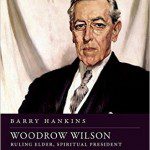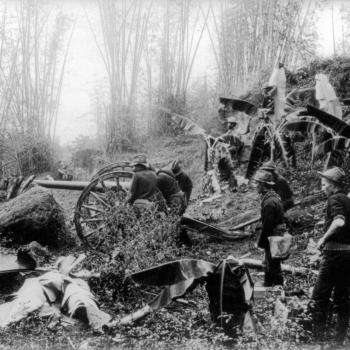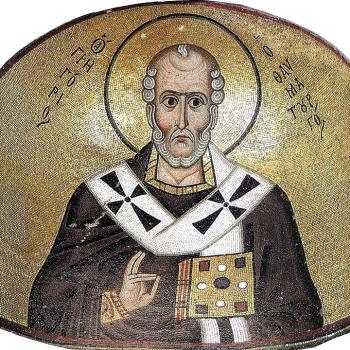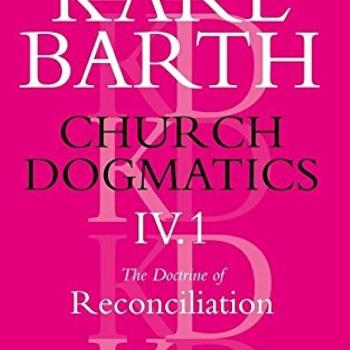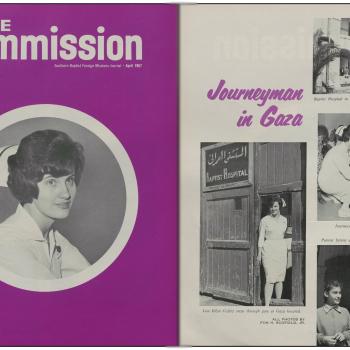In my last post, I profiled Raymond Llull (1232-1316) as a forerunner of modern-day interreligious dialogue. In this one, and for the same reason, I profile Nicholas of Cusa (1401-61), a fascinating figure in the Christian intellectual tradition. A native of Kues on the Mosel river, Cusa received his education at Heidelberg, Padua, and Cologne. Absorbing diverse intellectual influences, he owed a special debt to Neo-Platonic thought and to theologians such as Augustine, Bonaventure, and Meister Eckhart. At Padua and Cologne, he became familiar with the writings of Llull and studied the Catalonian’s corpus assiduously. Ordained a priest in 1426, Cusa experienced a meteoric career within the Church, becoming a Cardinal in 1448/49 as well as being appointed Bishop of Brixen in the Tyrolian Alps and a papal legate to German lands in 1450.
Irenic concerns were never far from Cusa’s mind. He worked tirelessly for the reconciliation to the Church of the Hussites in Bohemia. In 1433, he published De Condorantia Catholica, a comprehensive reform program for the Church and the Holy Roman Empire. In 1437 Pope Eugenius IV sent him to Constantinople to work for reunion with the Greek Orthodox Church—which became a short-lived reality as a consequence of the Council of Ferrara-Florence (1438-45). While in Constantinople, Cusa drank from the wells of Orthodox theology and became acutely aware of the challenge posed by Ottoman forces, which had virtually encircled the city. Cusa also met a number of actual Muslims while there and he viewed a copy of the Qur’an in Arabic. His knowledge of Islam was deepened while attending sessions of the Council of Basel (1431-45). There he met the Salamancan theologian Juan de Segovia (1393-1458), renowned for his knowledge of Islam, and had copied for himself John Ketton’s Latin translation of the Qur’an. That he pored over the Qur’an and other works on Islam, especially those of Riccoldo da Montecroce, is attested to by his copious marginalia preserved at the library in Kues. To Segovia, he once wrote that the solution to religious conflict should not be settled on the battlefield but through some sort of “dialogue” (colloquia).
Making sense of the diversity of human opinions, religious or otherwise, informs most of his later works, not least his famous Learned Ignorance (De Docta Ignorantia), completed in 1440. In it, he defended his two most celebrated principles, “docta ignorantia” and “conincidentia oppositorum.” The former—an awareness of human beings’ fundamental ignorance that, paradoxically, can only come from extensive learning–was the highest stage of wisdom accessible to the intellect, since truth is infinite and, for human minds, perpetually unknowable in its fullness. The road to truth therefore leads beyond reason and beyond Aristotle’s principle of non-contradiction; it is only in intuition that we can hope to glimpse God, in whom all contradictions meet. Such ideas were meant to chasten human pride and foster intellectual humility among people with diverse outlooks.
In the summer of 1453, Constantinople finally fell to armies of the Ottoman sultan, Mehmed II, “the Conqueror”—an event that sent shockwaves through all of Christendom, East and West. News of Ottoman troops desecrating and looting ancient Christian sites of worship exacerbated long-standing anti-Islamic sentiments. From this point on, “the Turk”—and not just “the Saracen” –became the most reviled Other in the Christian imagination, inciting intellectual refutations, eschatological speculation, and successive martial actions to forestall further Ottoman advance.
But for Cusa, the events of 1453 inspired a different kind of thinking. Vexed and saddened by religious divisions, he wrote and published in 1453 De Pace Fidei (“On the Peace of Faith”), based on a “vision” that he claimed to have experienced. In the vision, a number of angelic beings— “intellectual powers” –gathered before the throne of God lamenting violence done in the name of religion.” One figure, speaking for the others, addresses God as follows:
You [God] sent the different nations different prophets and teachers, some at one time and others at another. However, it is a characteristic of the earthly human condition that a longstanding custom which is taken as having become nature is defended as truth. Thus not insignificant dissensions occur when each community prefers its faith to [that of] another. Therefore, come to our aid . . . For each one desires . . . only the good which you are; no one is seeking with all his intellectual inquiry for anything other than the truth. . .. Therefore, it is you, the giver of life and being, who seem to be sought in the different rites by different ways. . .. O Lord, be merciful and show your face. . .. If thus you would deign to do this, the sword and the bilious spite of hatred and all evil sufferings will cease; and all will know that there is only one religion in the variety of rites (una religio in rituum varietate).
Moved by the angels’ entreaty, the “Word” (the second person of the Trinity) responds that human beings have “free will” and therefore cannot be coerced into one faith; even so, “truth is one” and, ideally, “all diversity of religion ought to be brought into one orthodox faith.”
It is then agreed to devise a plan “to lead all diversity of religions through mutual agreement of all men harmoniously back to a single, henceforth inviolable religion.” The remainder of the work is a dialogue among figures representing the various faiths of the world. Together, they achieve the following by the work’s end:
The concord of religions was therefore concluded . . . And it was commanded by the King of Kings, that the wise men [i.e., the interlocutors] return and lead the nations to the unity of the true worship . . .And finally endowed with full authority for all, they should gather in Jerusalem as the common center and in the name of all accept the one faith (unam fidem) and upon it establish perpetual peace (perpetuam pacem), so that the Creator of all may be praised in peace.
Interpretations of Cusa have widely varied. Some have seen him as an orthodox Christian, precociously recognizing the importance of conversation among religions instead of refutation and bloodshed. But others have seen him as a proto-universalist, stepping outside the boundaries of orthodoxy. And there are still other positions besides these two.
Procure a copy of On the Peace of Faith, which has been translated several times into English, and make up your own mind! In places it makes for gripping reading, and Cusa was certainly a theological outlier in his time.



